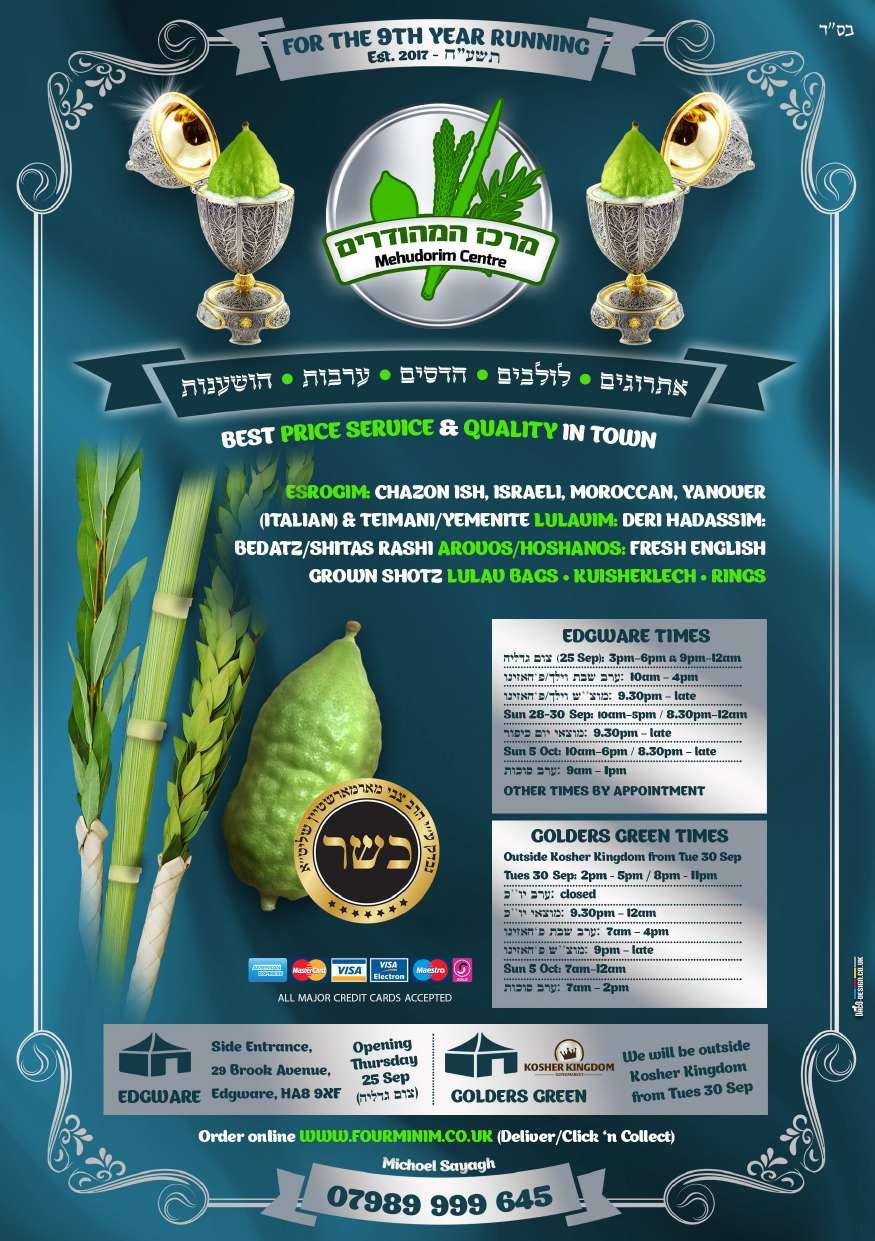



































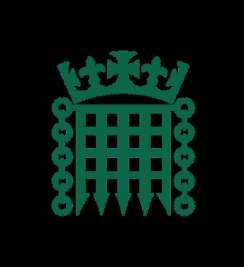
From my family to yours, wishing you and your loved ones Shana Tova u’Metukah - a sweet and happy new year. My team and I are here to support you. If you need assistance, please do get in touch via the email below.

Sarah Sackman KC MP Member of Parliament for Finchley and Golders Green sarah.sackman.mp@parliament.uk

Discover Over 5,000 Designs, Each Fully Customisable to Your Taste
Scan to Browse









Diamond & Gemstone Jewellery, Made to Order in 5–6 Weeks

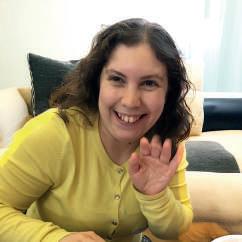


Empowering neurodivergent children, their families and adults with neurodevelopmental disabilities to live their best lives.
As demand for our services increases, community remains our greatest strength. We need your support this Rosh Hashanah. Please donate today at norwood.org.uk/rh25


















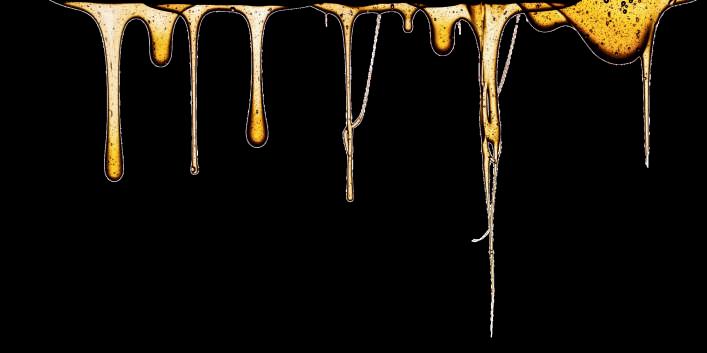












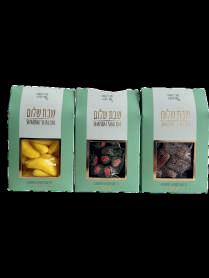
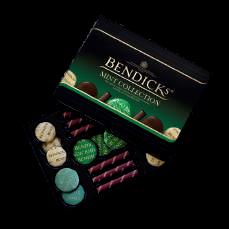
















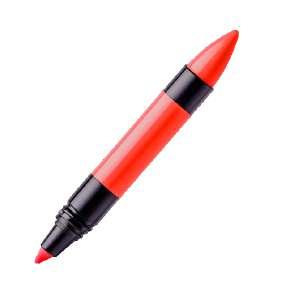
During this period of reflection and growth, we’ve added opening hours to make it easier than ever for you to secure your devices and protect your family. Walk in. Get protected. Leave with peace of mind. Your family’s safety can’t wait, so neither should you.


ADDED HOURS FOR ELLUL & TISHREI
MON 8TH, 15TH & 29TH SEPT
TUESDAYS 9TH, 16TH & 30TH SEPT
20:00 - 21:30
OPENING HOURS
SUNDAY - THURSDAY 10:30- 13:30 FRIDAY 10:30- 13:00
MEN’S ONLY HOURS
SUNDAY & WEDNESDAY 20:00 - 21:30
CLOSURES FOR YOM TOV ROSH HASHANA - 22 -24 SEPT CLOSED YOM KIPPUR / SUKKOS - 1- 17 OCT CLOSED





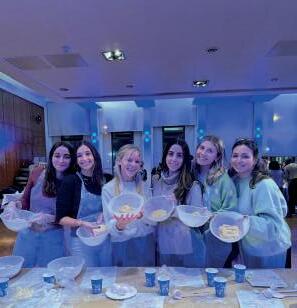



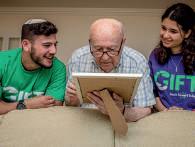


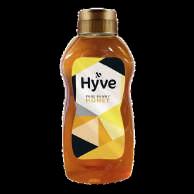














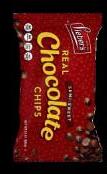











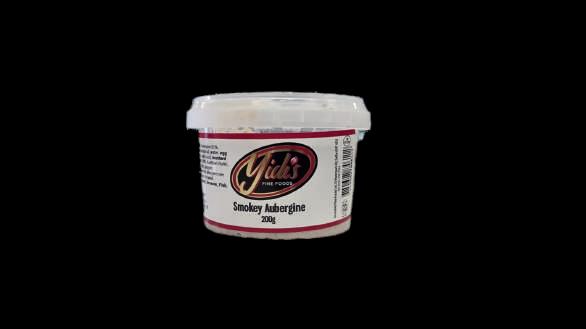




























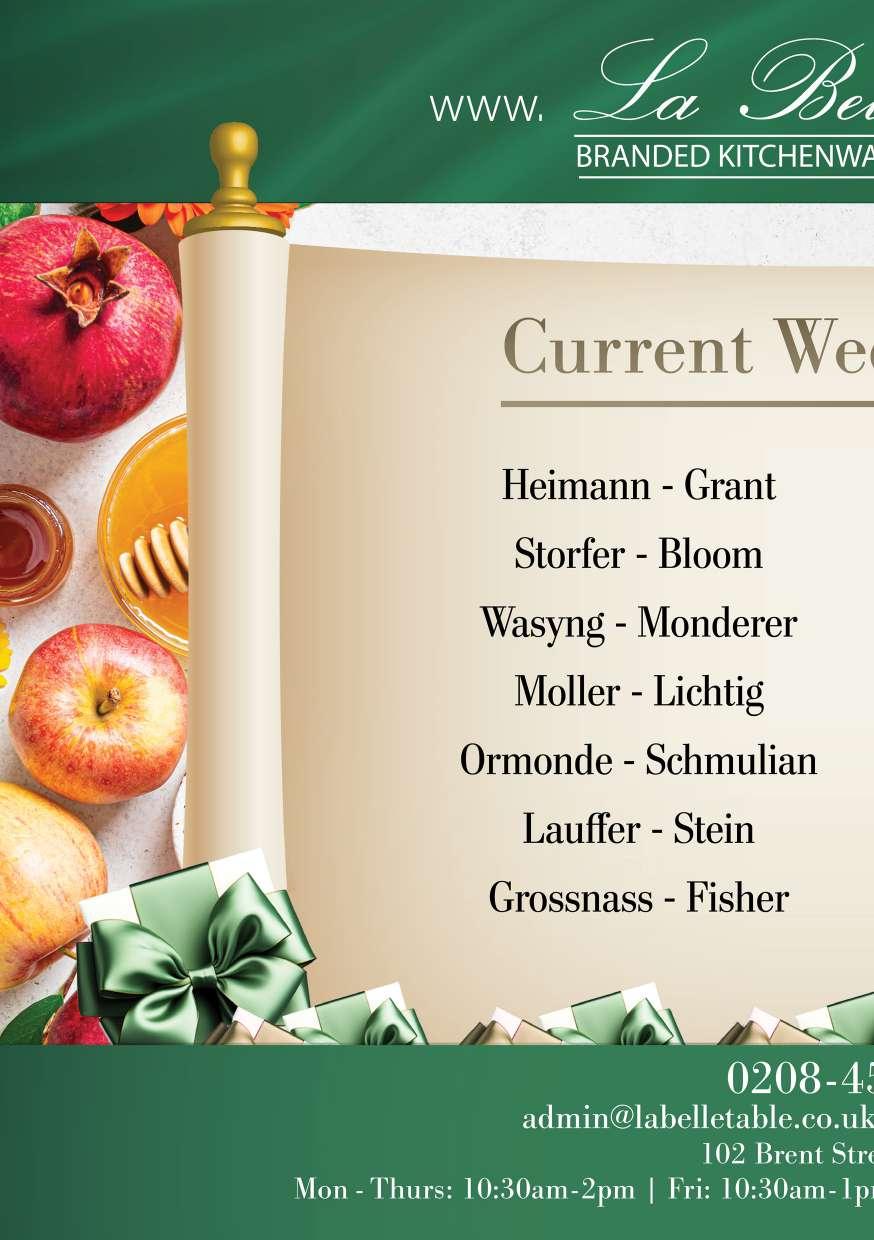




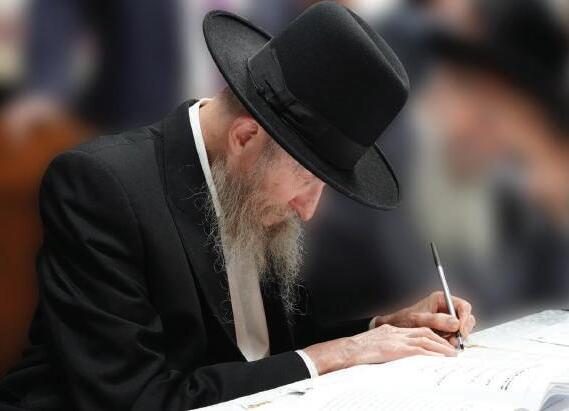





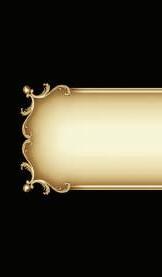






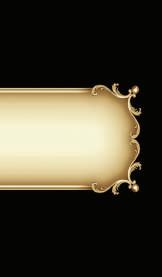

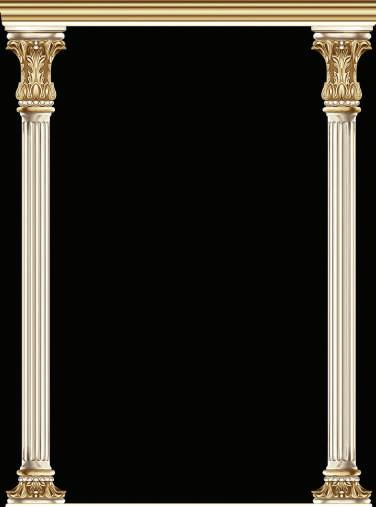




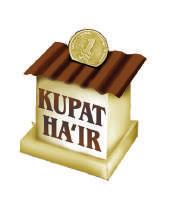




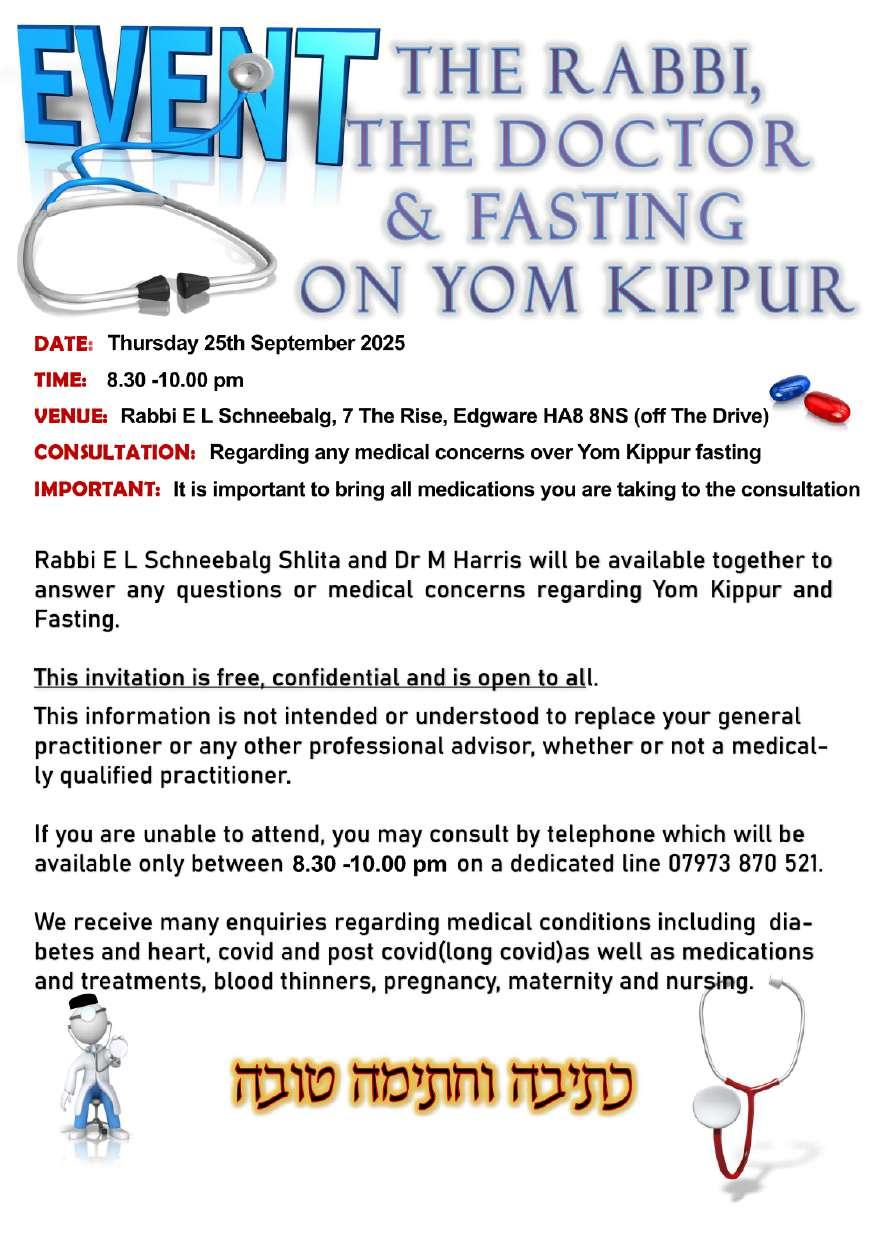








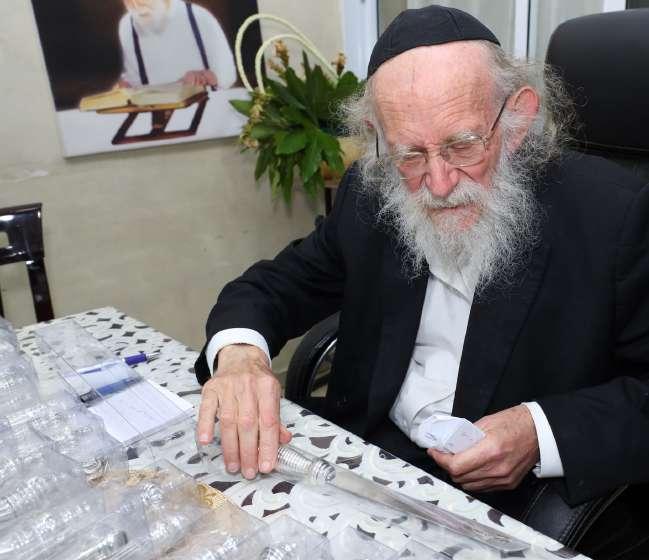

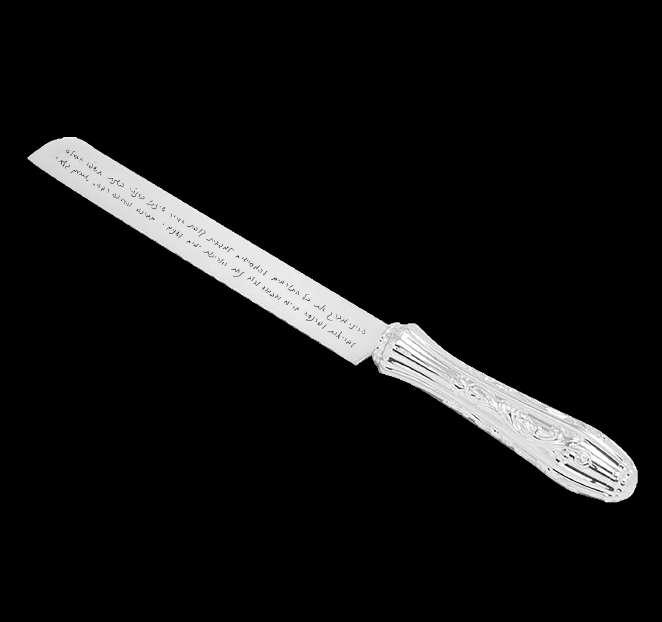

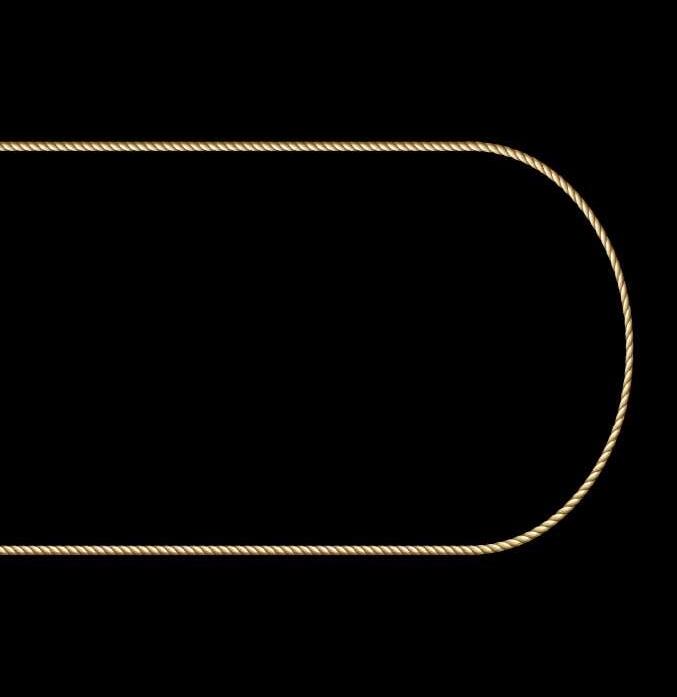

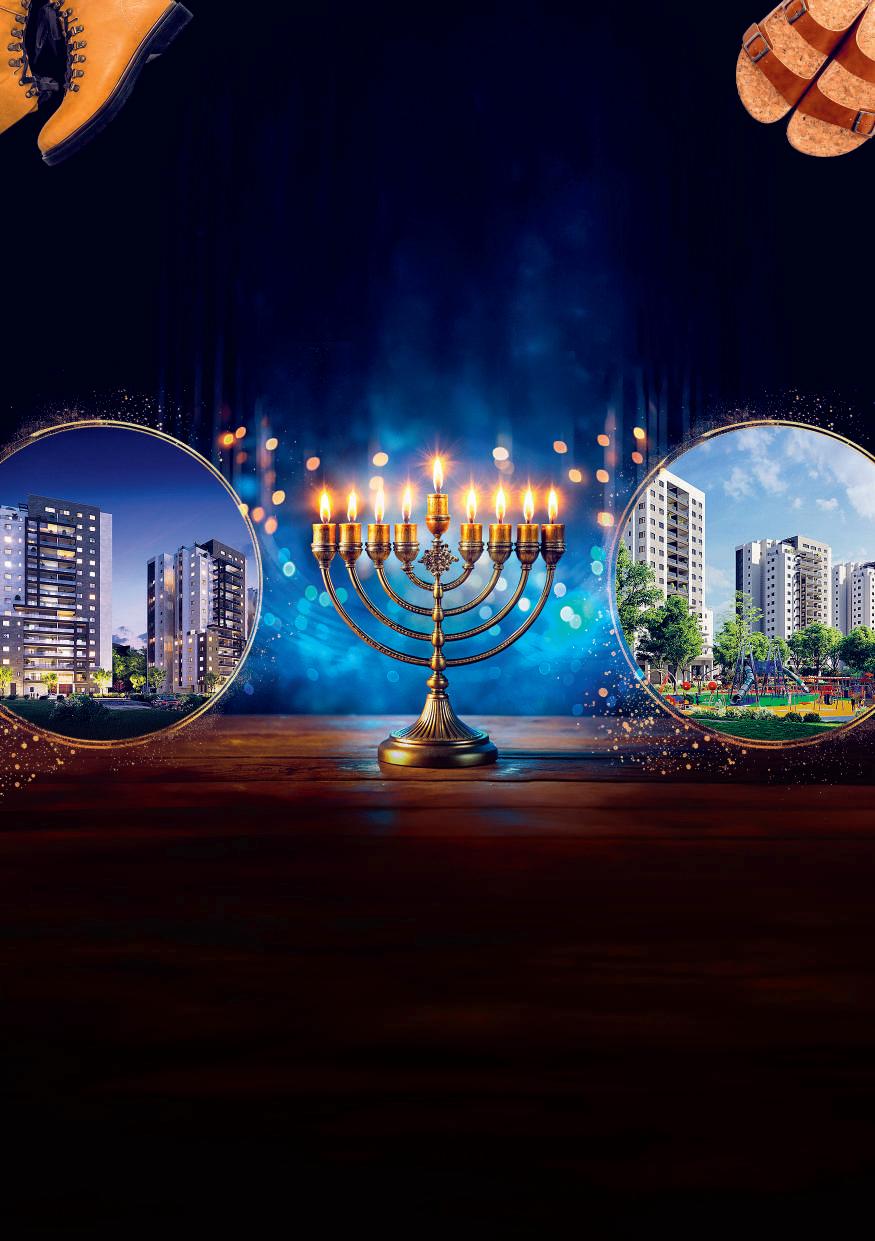






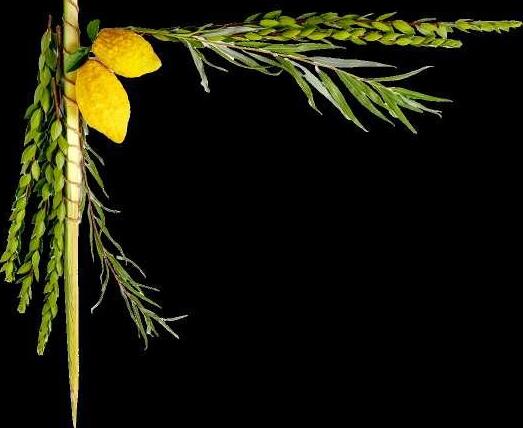





�� Gourmet Glatt Kosher cuisine – under Mehadrin supervision
�� Ashkenazi & Sephardic daily minyan
�� Large Souccah with sea view
Kids & teens activities | Babysitting available
✡ Inspiring atmosphere with live music, shiurim & joyful moments

�� Special event: Yortseit of the Pele Yoetz (Rav Eliezer Papo z”l)
�� Heated indoor & outdoor pools + Spa & Fitness
�� Golf, tennis and full access to hotel facilities
�� Airport transfers from Varna included
�� Welcome gifts & surprises during your stay
With the approach of the year 5786, we hear from Hamakubel Harav Sender Chazan, shlit”a, a member of the minyan of mukubalim of the late Admor m’Porisov ztvk”l, regarding the explicit promise of the holy Arizal that by performing a Pidyon Nefesh one is guaranteed to live through the year. What is the source of this powerful segulah? How does it work? How is a Pidyon Nefesh performed? Read on to uncover the answers to these questions and discover incredible stories of miraculous yeshuos.
We live in a world where segulos abound. Everyone needs help with something else. And yet, despite the proliferation of segulos, it is rare to find one that can be traced back to an early, widely accepted source. And yet the segulah of a Pidyon Nefesh is even more than that — it comes with a promise!
One of the very few promises found in the seforim of yesteryear, is this promise from none other than the holy Arizal ztvk”l. He promises that whoever does a Pidyon Nefesh on Erev Yom Kippur – bevadai sheyashlim shenaso – will definitely live through the year.
Where else do we find such a promise?!?
In these politically volatile times, when we are surrounded by war and hate across the world, there is nothing more comforting than entering the new year with the Arizal’s promise that one will live through the year.
To gain a better understanding of the specifics of the pidyon, we reached out to the esteemed mekubal, Harav Sender Chazan, shlit”a, a member of the minyan of distinguished mekubalim who daven at the Porisover Rebbe’s beis hamedresh three times each day. Harav Chazan performed the pidyon countless times, and he gives us a glimpse into the specifics of this segulah in general, with a closer view into how it was performed in Porisov.
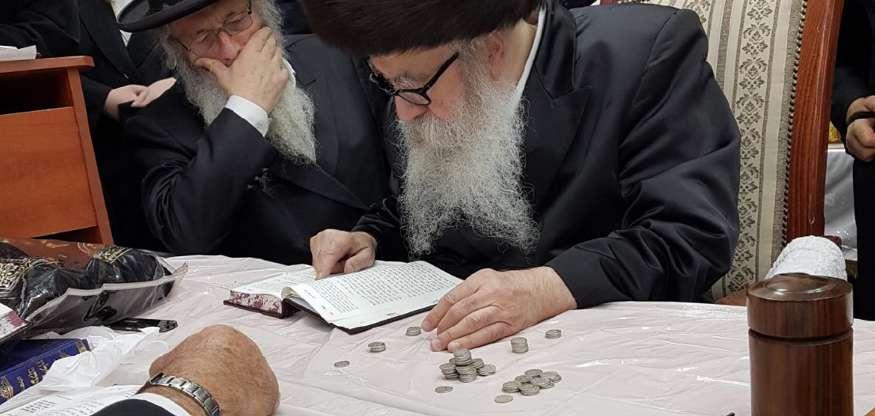
Good afternoon, Harav Chazan. Before we begin, could you share with our readers how you were drawn into the world of Kabbalah?
It began more than twenty years ago. I was a young kollel yungerman at the time, and I was particularly close to the late Porisover Rebbe, zt”l. One day, the Rebbe approached me and asked if I’d be open to joining an early morning kollel that he was about to establish. When I asked him what the group would be studying, his cryptic reply was: “We will study good things…”
I accepted the invitation and we began studying various topics of Kabbalah, with the Rebbe at the helm, alongside a group of distinguished talmidei chachamim. Since then, I have been zoche to learn many things. But let’s return to the matter at hand: what did you want to know about the Pidyon Nefesh?
Let’s start at the beginning. What is the source for this pidyon?
The earliest source for this practice is found in the sefer Shemen Sasson, a commentary on Shaar HaKavanos, which records the segulah and the order of this custom in the name of the holy Harav Chaim Vital, zt”l, whose teachings originate from his teacher, the holy Arizal.
Let me first quote from the Shemen Sasson. He writes: “I found in the pamphlet Sefer Beis Moed, from the holy Harav Chaim Vital, zt”l, that he used to perform a Pidyon Nefesh in the following manner: On Erev Rosh Hashanah he would count 160 coins and set them aside. On Erev Yom Kippur, he performed the pidyon and again set the coins aside. Then, on Erev Succos, he would distribute them.
“This is written in Sefer HaKavanos (Shaar Succos, Chapter 3), that on Erev Succos Harav Chaim Vital would distribute the funds, referring specifically to the Pidyon Nefesh contributions—not as a gabbai. And one who performs the pidyon in this manner is assured to live through the year.”
This is the earliest source
where we see how the pidyon is performed and also the amazing promise that accompanies it.
Understandably, this assurance refers to the years allotted to a person and guarantees that they will not pass away prematurely from other causes.
Wow, to have an outright promise! Why specifically 160 coins?
The number 160 has great significance in Kabbalah. This isn’t the place to elaborate, but I will share one concept that is easily understood: the word tzelem, image, has the numerical value of 160, and in the merit of giving 160 coins, one attains a tzelem Elokim, a divine image.
Kabbalistic sources explain that every person possesses a tzelem Elokim. When a person becomes ill, part of this divine image is gradually diminished, until, upon his passing from this world, it departs entirely. Therefore, to preserve a person’s life, one gives 160 coins — corresponding to the numerical value of tzelem —
so that the divine image remains intact, and life is sustained. Similarly, if a person is unwell and part of the tzelem is diminished, they can be restored to health by giving 160 coins to tzedakah and performing the Pidyon Nefesh.
Which type of coins are used for the Pidyon Nefesh?
In truth, it simply says 160 coins, however, there is a strong significance to using genuine silver coins for this.
Around thirty years ago, the U.S. government minted a ten-cent silver coin (a dime) Only a limited number were made, before its brief run was brought to an end. Today, these coins are considered antiques and they are very difficult and expensive to obtain. Here in Porisov, we were fortunate to procure a sizable number of these coins, which we use for each pidyon, thereby fulfilling the added significance of conducting the pidyon using 160 silver coins.
What is the process for performing the Pidyon Nefesh? Are any special sheimos or pesukim recited?
There is a specific order of tefillos to recite. It begins with a tefillah that includes the name of the person for whom the pidyon is being performed, and a request that any gzar din that is, chas veshalom, destined for this person should be transferred to the money that will be given to tzedakah. Various
chapters of Tehillim are recited thereafter.
There are several variations to this practice. One originates from the Rashash, another from the Chida, among others. The most commonly followed version in our circles today is the Pidyon Rashash, and this is the practice observed in Porisov.
Can anyone undertake this practice or does one need to be familiar with the ‘small print’ to perform this successfully?
There are many mystical elements to this practice and it is not meant to be performed by a layperson.
As someone who has performed the Pidyon Nefesh many times, particularly in Porisov, can you describe how it was done by the Rebbe zt”l?
It is impossible to fully convey the holiness and awe felt in the beis hamedrash when the Porisover Rebbe, zt”l, conducted the Pidyon Nefesh. One could sense, almost tangibly, that he was operating on a higher spiritual level, accomplishing wonders in the upper realm.
The Rebbe, zt”l, performed every Pidyon Nefesh with a minyan. They went through the process together and with Hashem’s help, removed any decrees from those being redeemed. The Rebbe was extremely focused, performing the pidyon with
immense seriousness and elevation. It was evident that he was focusing on various kavanos while conducting the pidyon and reciting the relevant tefillos
Is the pidyon performed on Erev Rosh Hashanah and Erev Yom Kippur only or can it be performed at other times of the year as well?
It is not restricted to these times at all, however, that is when it was generally performed on a bigger scale.
Let me explain: the idea behind the incredibly holy practice of Pidyon Nefesh, is that all judgements and evil decrees that may, chas v’shalom, have been destined for a person, are redeemed and removed when he gives his own money to tzedakah— which is regarded as if he has given away a part of himself.
Therefore, whenever a Yid finds himself in a difficult situation, it may, chas veshalom, indicate that judgements are upon him and a Pidyon Nefesh can — and, with Hashem’s help, will — assist him.
The Pidyon Nefesh is intended to help in any situation, however, it is especially pertinent in the case of a sick person. As mentioned earlier, when a person is unwell, part of his tzelem Elokim begins to diminish, until it leaves completely when the person departs from this world. Since the pidyon is done with 160, which is the gematria of
the word tzelem, it acts as a segulah to restore the person’s tzelem Elokim, which is especially effective in restoring them to full health.
Back to your question as to when a Pidyon Nefesh is performed, it is whenever a Yid is in need of a yeshuah, specifically in the case of a choleh. In fact, the Porisover Rebbe, zt”l, used to perform this segulah very often, sometimes even daily. He would gather a minyan and we would perform the pidyon for a specific name.
If so, what is the significance of Erev Yom Kippur?
The significance of Erev Yom Kippur, as attributed to the Arizal, involves the extraordinary promise that “the person will certainly live through the year”. It is only natural that people are eager to seize the opportunity.
While the Porisover Rebbe, zt”l, performed the pidyon on Erev Rosh Hashanah and on Erev Yom Kippur, he stipulated that the main thing is to do it on Erev Yom Kippur.
The Rebbe’s Erev Rosh Hashanah ceremony was typically held immediately after Hataras Nedarim, in the presence of his dedicated minyan of mekubalim. During this sacred ceremony, the many Yidden who had sent the 160 coins were spiritually redeemed and blessed with a gut gebentched yohr. While each of the Rebbe’s Pidyon Nefesh ceremonies were extraordinary, the one performed on Erev Rosh Hashanah stood out as truly exceptional. It was clear to all that the Rebbe was acting as an emissary for hundreds of Yidden, fervently beseeching Hashem to grant them a sweet

and joyous new year, filled with an abundance of bracha.
The pidyon was performed again on Erev Yom Kippur—just as recorded by Harav Chaim Vital—in the same manner as on Erev Rosh Hashanah.
In conclusion, let me ask you: As someone who was personally involved in performing the Pidyon Nefesh as part of the Rebbe’s minyan, did you actually witness a situation where this promise was clearly fulfilled?
Firstly, if the holy Arizal made the statement then it’s not a question! It should be self-evident that when such a pure and holy tzaddik gives a promise, it carries absolute weight, and there is no need for elaboration. That said, I can share that we have personally witnessed and heard countless stories of the sick being healed and Yidden experiencing yeshuos in many areas of their life in the merit of these pidyonos.
I’ll add, somewhat in jest, that if you’re looking for proof
that this works, just look at the fact that so many Yidden keep coming back again and again. Since we are among those who arrange the pidyonos, we recognize many of the names, and I constantly see the same names reappearing over time. In today’s world, if something doesn’t work, people quickly abandon it. No one invests in a segulah that doesn’t deliver results. The very fact that so many people keep returning whenever they need a new yeshuah, is proof in and of itself.
Incidentally, the Rebbe, zt”l, would often say that the greatest yeshuah is the very act of giving money to tzedakah!
Thank you so much, Harav Chazan, for sharing your precious time with us during these busy days of Elul! May you merit a kesiva v’chasima tova and a gut gebentched yohr.
Amen, and a kesiva v’chasima tova to you and all of your readers as well.
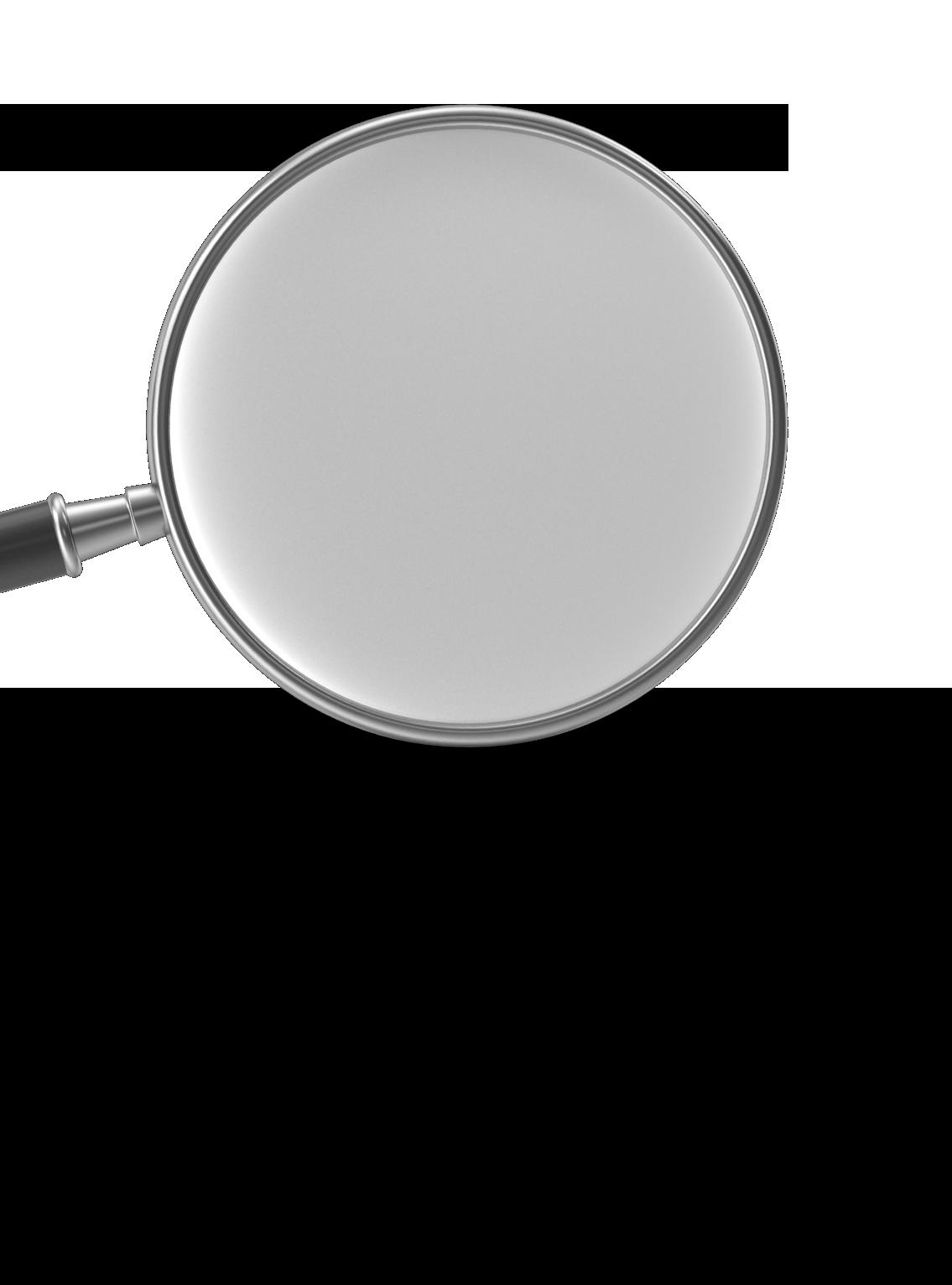
An informative discussion with Harav Yosef Teitelbaum, shlit”a, one of the closest confidants of the late Porisover Rebbe, zt”l, here in London, who shared firsthand accounts of what he personally witnessed, along with fascinating insights into the tradition of Pidyon Nefesh.
When discussing the Pidyon Nefesh that takes place at the Porisov Beis Hamedrash, conversations naturally turn to Rav Yosef Teitelbaum, shlit”a, who was among the closest confidants of the late Porisover Rebbe, zt”l, here in London. Rav Yosef has hosted the annual Pidyon Nefesh event at his home on the first day of selichos for many years now. We therefore arranged to meet with Rav Yosef to hear about the Pidyon Nefesh.
Before we hear from Rav Yosef about his experience surrounding the Pidyon Nefesh itself, we ask him to share a meaningful story related to the pidyon
“Stories abound,” he shares. “I don’t even know where to begin.”
Rav Yosef has been privy to many stories over the years, but we ask him to choose one for our readers and he is reminded of a story that took place here in London. A local Yid became entangled in a serious legal case, struggling for many years through various court
proceedings. At one point, he faced the threat of a lengthy prison sentence.
This Yid didn’t have much of a relationship with the Porisover Rebbe, zt”l, however, like many Yidden, he would redeem himself via the mystical Pidyon Nefesh, and he was even present at the pidyon in Yerushalayim one year. When it came to the final court, the judge sentenced him to several years of imprisonment, a similar sentence to others involved in this saga.
“A couple of days passed,” concludes Rav Yosef joyfully, “and this Yid was informed that the judge reconsidered
the case and he is now a free man!
“The story didn’t end there. Once his prison sentence was lifted, a new ordeal began: the government demanded he pay an astronomical penalty—TWELVE MILLION pounds! To cut a long story short, he got away with a mere few pounds and put the story behind him.
“Perhaps this story sounds like it occurred in the middleages, or even in a third-worldcountry,” continues Rav Yosef, “however, I can attest that this happened recently, right here in London, with a Yid who was redeemed via the Pidyon Nefesh.”
“My brother passed away this year… ”
We prevailed on Rav Yosef to recount another story, and he shared a tale so astonishing, that if not heard firsthand from an eyewitness, would be hard to believe.
There was a Yid who would send an envelope to Rav Yosef each year, a week or two before the annual Pidyon Nefesh event held in Rav Yosef’s home. The envelope contained a large sum of money, containing the requisite 160 coins each, for many members of his extended family living across the world, including the relevant denomination — pounds, shekels or dollars — depending on the location of each of those people. (More information about the type of coins to be used is mentioned later.)
Rav Yosef had no idea who the sender of the envelope was, he just knew that this envelope would come year after year and he dutifully forwarded those names to Yerushalayim so the Rebbe could perform the pidyon.
It happened one year that the envelope didn’t arrive and it was only after Yom Kippur that Rav Yosef realized that the man had indeed sent it, but it had accidentally fallen behind his mailbox. Since it was after Yom Kippur, it was no longer possible to perform the Pidyon Nefesh, and Rav Yosef had no way of notifying the sender.
“At the following year’s event, I noticed a Yid who had never attended previously,” shares Rav Yosef. “He approached me and introduced himself as the sender of the anonymous envelope, and asked if I forwarded the names he sent last year. I then explained what happened and apologised that I had found it too late.
“The Yid paled and he said: ‘Oy vey, my brother (a fairly young man) who was included in that list passed away this year…’” ***
As the late Porisover Rebbe’s trusted confidant here in London, Rav Yosef is uniquely placed to clarify the process of the Pidyon Nefesh for us, in accordance with the information he received.
In the source brought down by Harav Chaim Vital,
it states that one must give 160 coins, but it doesn’t actually specify which type of coin to use. Can a Yid from London give in shekels or dollars?
I heard from the Rebbe, the late Porisover Rebbe, zt”l, that each person should use the currency of the country in which they live, thus an English Yid should give in pounds, an American Yid in dollars, and so on.
Harav Sender Chazan shlit”a shared that the actual pidyon is performed with silver dimes. If so, how does it correlate to the £160 I give in London?
The way it works is that we take the £160 provided by the person and we redeem it via the silver dimes, and the pidyon is performed using those silver dimes, while the

original £160 are distributed to those in need before Succos.
In this way, the benefit is actually two-fold: the pidyon is performed using genuine silver coins, and the money is distributed to the poor, which is actually the main intended purpose of those 160 coins.
In regards to the silver coins, I recall that the Rebbe used to say that silver represents rachamim, mercy, and gold represents din, judgement. That is why we specifically use silver coins, to invoke mercy in anticipation of the coming year, and this is also why we use a silver becher for kiddush.
What actually happens with the money, to whom is it distributed?
As is well known, the Rebbe, zt”l, would distribute fruits and vegetables to hundreds of poor Yidden each week — including Rabbonim,

Rebbeim, Kollel yungerleit, almanos and yesomim. The Pidyon Nefesh contributions were used to sponsor these distributions for the Yom Tov of Succos.
Is one permitted to use maaser money for the pidyon?
I once asked the Rebbe, zt”l, and he replied: “No, that is not permissible. How can one take money designated for the poor to redeem oneself? It is not ours.”
Is one required to give separately for each member of the family?
Someone once asked me to ask the Rebbe, and the Rebbe, zt”l, responded: “Tell him that it is good for him to give for each one separately, if he can.” The Rebbe would instruct those close to him to give separately for each child and grandchild.
However, the Rebbe used
to say that if someone is truly destitute and he is dependent on others, then he should at least give a smaller amount to redeem himself. Someone who can afford the 160 coins for himself, but finds it difficult to do the same for the rest of his family, can give a smaller amount for them. However, the Rebbe would say, “This is a serious matter, not a game,” to emphasize that it should not be taken lightly. In other words, be honest with yourself when making these decisions.
In the Porisov Beis Hamedrash in Yerushalayim, where there are Yidden who are truly destitute, the Rebbe established a pushka, where anyone who was unable to pay in full, could contribute however much he was able and be included in the pidyon. However, the Rebbe didn’t want people to take this lightly.
Who performs the
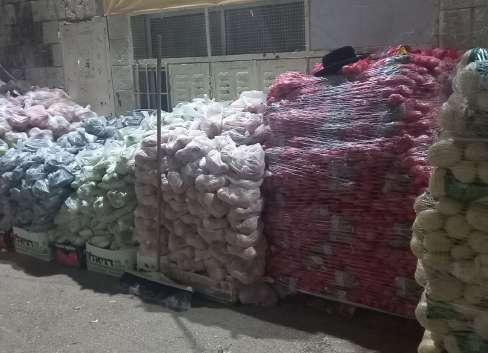
pidyon now that the Rebbe is no longer with us?
The pidyonos are currently performed by the same minyan of mekubalim who did this with the Rebbe in the past, using the same coins, in the same beis hamedrash, and in accordance with the same process that the Rebbe taught them, and the same tefillos and kavanos
Incidentally, when discussing this minyan, it should be noted that we are talking about a very distinguished group of Yidden, who aside from being mekubalim well-versed in the hidden aspects of Torah, are respectable yirei Shamayim who serve Hashem on a higher level.
Among this group is the renowned Gaon Harav Amrom Oppman, shlit”a, Dayan of the Eida HaChareidis and among the leading rabbonim of Porisov, as well as several other
pure and precious Yerushalmi Yidden.
To conclude, is there anything else you would like to share?
I’d like to finish on a positive note. The Rebbe once said to Reb Henich Goldfinger, z”l, that when the holy Arizal speaks of “living through the year,” it does not mean merely getting through it—it means a good year, a sweet year, with all the necessities a person needs!
May the Ribono Shel Olam help all of Klal Yisroel merit a truly sweet and joyous year. A kesiva v’chasima tova.
Amen. Same to you and all of Klal Yisroel.




A proven tested segulah to
with Hashem’s help


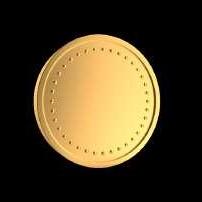
A Holy Segulah
Performed by a special minyan from the Porisov Rebbe, zt”l
Taking place on Erev Rosh Hashanah and Erev Yom Kippur
Proceeds will support fruit and vegetable distribution to needy families, as directed by the Porisov Rebbe, zt”l


We are looking to recruit for the following roles for an immediate start:
Learning Support Assistant (12pm – 5pm)
To help support individuals and small groups with SEN English and Maths
Standards Officer (1pm – 5:30pm)
To assist with supporting and organising students around the school, in corridors and in classrooms, and some pastoral care for our students.
The successful candidates will:
• Have drive, energy and creativity, and an appropriate understanding of students’ needs
• Be ambitious for all our children with the highest expectations of our students’ potential
• Be supportive of the religious ethos of the school
An application form is available from the school office. Please email: office@pardesgrammar.co.uk for an application form, or for an opportunity to find out more about these roles.
Pardes House Grammar School is committed to safeguarding and promoting the welfare of children and expect all staff to share this commitment. Any offer of employment will be subject to receipt of satisfactory references from previous employers and a DBS check at an Enhanced level, including the Barred Lists.

We are looking to recruit a new member of our Senior Leadership Team to start in the Spring Term:
With responsibility for one or more of the following areas: Teaching and Learning, SEN, Operations, Staff Line Management
A successful candidate will:
• Have drive, energy and creativity, and an appropriate understanding of students’ needs
• Be ambitious for all our children with the highest expectations of our students’ potential
• Be supportive of the religious ethos of the school
An application form is available from the school office. Please email: office@pardesgrammar.co.uk for an application form, or for an opportunity to find out more about this role.
Pardes House Grammar School is committed to safeguarding and promoting the welfare of children and expect all staff to share this commitment. Any offer of employment will be subject to receipt of satisfactory references from previous employers and a DBS check at an Enhanced level, including the Barred Lists.

The London Board for Shechita (LBS) is looking to employ one or more Shomerim םירמוש/םיחיגשמ to join our devoted team of שדוק ילכ who are upholding and improving the standard of Kashrus across the UK, working full or part time (as a job share) in shops licensed under the LBS hechsher.
T This is an exciting opportunity to be involved in one of the largest kosher meat authorities in Europe
Experience is not required as full training will be given although a general understanding and knowledge of הכלה is expected.
Work will be based in the NW London area.
The successful applicants will:
• Be able to work either full or part time between the hours of 6AM and 6PM
• Have knowledge of Kashrus and related Jewish customs and practices ;
• Work in a professional manner, be able to work on their own initiative and as part of a team,
• Be energetic and have a positive work ethic,
• Have a strong desire for self-development,
• Have excellent interpersonal skills,
• Once trained, be able to work unsupervised and manage your own workload, as well as deliver results under pressure;
• Ideally have a driving licence and access to a car
If you would like to discuss this opportunity in more detail , please email Rabbi Binyomin Goldblatt rabbi.goldblatt@shechita.co.uk or phone 07557380514 for an informal conversation by Friday 17th October 2025 and include a C.V. and covering letter explaining why you are interested in the role








